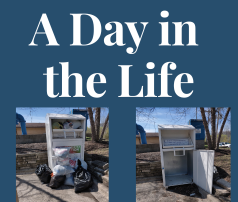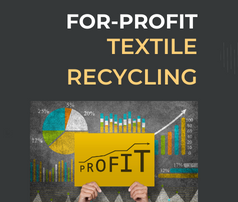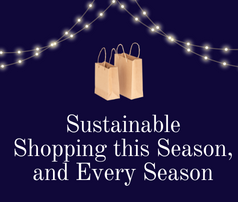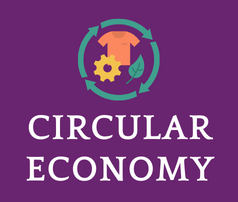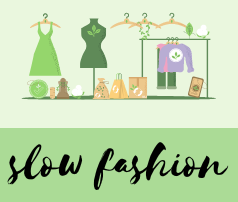 Green Benefits
Green Benefits

“Although 75% of America’s waste is recyclable, we only recycle around 30% of it.”
In September, the Vice President of our company attended the S.M.A.R.T. 2019 Regional Meeting in Raleigh, North Carolina. Over the course of the weekend, he attended a Panel Discussion with three leaders making a difference in the textile recycling world. One of these leaders was David Rousse, president of the International Nonwoven Disposables Association (INDA). During his presentation, David discussed plastics in the environment, the importance of recycling, and posted one salient powerpoint slide that takes the three R’s we are used to… Reuse, Reduce, Recycle…two steps further.
In his “Desired Path Forward” for the future of our planet and recycling, David calls for each of us to “Support the 5 R’s”:
- Refuse – plastic bags, straws, cutlery, etc
- Reduce – use of plastic in packaging
- Reuse – versus disposing; may include repair
- Recycle – into same or another product
- Repurpose – use an item for something else
At Chicago Textile Recycling, we strongly encourage our recyclers to recycle their textiles, with us, or with their local resale store. And even further, we truly desire to see each of you go beyond recycling only textiles to eco-consciously disposing of all recyclables you come into contact with, from plastics to aluminum, cardboard and paper to anything that can be kept out of landfills by using one of these 5 R’s. “Over 11 million tons of recyclable clothing, shoes, and textiles make their way into landfills each year.” With “9 out of 10 people [saying] they would recycle if it were ‘easier,’” we at Chicago Textile Recycling hope with education about recycling and raising awareness, these numbers can change.
A few months ago, we encouraged this very idea through a blog post highlighting a few things CTR does not accept in their bins and how you can go about recycling those products in your area. Read that blog here.
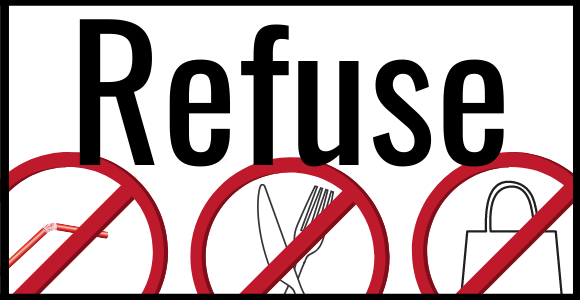
Refuse – plastic bags, straws, cutlery, etc.
The first “R” David highlighted was to “Refuse” plastic bags, straws, cutlery, etc. When out and about, it is so easy to stop by a store and buy an item and simply accept a plastic bag upon purchasing that item. But David and those at INDA encourage us to refuse plastic bags. If it is something small, choose instead to carry the product(s) out of the store in your hand or purse after purchasing. Even better, place a few reusable grocery bags in your trunk, and put them back in there after unloading each time when you get home. That way, you are never in need of a plastic bag even if you’re simply making a quick stop on your way home from work.
Refuse straws and plastic cutlery by drinking with an open lid or also stocking your car with reusable straws and cutlery when out and about. Go one step further and bring your own reusable travel cup. These are small items that could even fit in your purse or backpack if you use alternative transportation getting around in daily life. Small efforts go a long way in helping reduce your carbon footprint. “According to a study done by the University of Georgia, 18 billion pounds of plastic trash winds up in our oceans each year. To put that in perspective, it’s enough trash to cover every foot of coastline around the world with five full trash bags of plastic…compounding every year.”

Reduce – use of plastic in packaging
The second “R” is to “Reduce” the use of plastic in packaging. Recently, we posted an article about how parts of Asia are reducing packaging by grouping produce items with banana leaves instead of plastic bags. (Read more here) Part of this problem is improper disposal. “The United States throws away $11.4 billion worth of recyclable containers and packaging every year.” The other part of the problem is simply reducing the need for this packaging with creative solutions, such as banana leaves for produce. “The amount of plastic film and wrap produced annually could shrink-wrap the state of Texas.”
Some ideas from this website on reducing your plastic use include opting for products in recyclable boxes or cardboard containers rather than bottles, staying out of the frozen section of the grocery store and buying bulk with reusable containers.
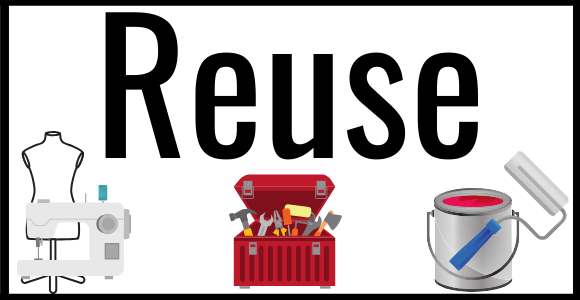
Reuse – versus disposing; may include repair
In our consumer-driven society, we often choose to throw away something when it is in need of repair rather than taking time to mend it or have it mended. A hundred years ago, this was not the case. Most belongings were made with high quality and longevity in mind, so when they did break or need mending, there were shops in place or know how by the general public in fixing these items at home. Many women sewed the family’s clothes, so when there was a rip in the fabric or a hole in a sock, repairs were easy and done right at home.
This newer proliferation of consumerism and the ease it brings in replacing rather than repairing has led to an overabundance of items ending up in our landfills when they could have lasted longer with a bit of loving repair. Our third “R” is “Reuse” – versus disposing, which may include repair.
Learning the basics of sewing can help many of your textiles have a longer shelf life at home and making good use of youtube videos can also help in minor repairs of items around the house. With landfills reaching their limits, it is increasingly important that we seek out items that are made with high quality and return to the mindset of repair and restoration over replacement.
Reuse and DIY (Do-It-Yourself) is in fact an up and coming trend and has the potential to again become the norm. Bloggers, Youtube sensations, a peaked interest in DIY through the creation of Pinterest and small starter companies are pursuing this very idea of reuse in restoration through antiquing, restoring old homes with reclaimed barn flooring and original revamped antique pieces, reusing old clothes items in new ways with many other ideas of reuse in the everyday. As the focus on environment and recycling continues to grow, hopefully these interests of the upcoming generation will continue to expand the idea of reuse into the norm. The saying “One man’s trash is another man’s treasure” rings true here as antiques and resale stores become a larger part of our consumer trend.
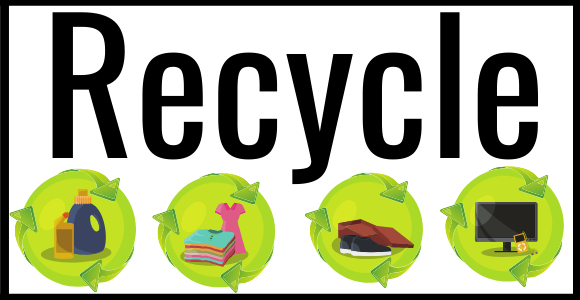
Recycle – into same or another product
The fourth “R” is “Recycle” – into the same or another product. Reuse and recycle are often confused terms so a simple explanation to differentiate the two is that reuse involves using the same product in its original form for the same or a different purpose. Recycling is a process and involves turning one product into a new product so as not to waste the material.
Recycling can involve numerous products, from cans to paper to textiles to plastic bottles, and much more. Some even make businesses out of collecting and creating art to sell with other people’s recycled goods. You can recycle paper down to pulp and create new paper or recycle blue jeans into insulation for homes. There are many ways that recycling companies have figured out how to create new products from older products with life still left in them.
As many of you know, the heart of who we are at Chicago Textile Recycling is about educating our community. Knowledge has been growing in the problem of textiles in landfills, and so has the pursuit of creating a closed loop of textiles and fashion. “Over 11 million tons of recyclable clothing, shoes and textiles make their way into landfills each year.” Donating your textiles to resale stores and donation bins is one big way you can give your textiles another life. The same is true of other goods in your home with regards to being recycled versus placed out by the curb on trash day.
Textiles can be recycled in almost every case, with the majority reused and resold in other countries. Other textiles are recycled and cut into wiping rags, and others are recycled and broken down into fibers to make filling for car seats, insulation and other products. Here is our blog about the process recycled textiles go through after donation.
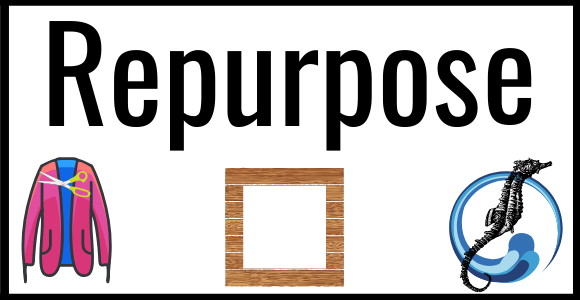
Repurpose – use an item for something else
Already mentioned previously in this post is the fifth and final “R”: “Repurpose” your items for something else. There are many ways you can do this. Cutting an old coat down to a vest, using recyclables to make art, using old wood flooring to make picture frames or child size furniture, or turning old bed sheets into new clothes are just a few ways household items can be repurposed. Follow our page on Facebook or Twitter to read articles about different companies that are doing this very thing with textiles.
One example of this in our very own backyard is the Shedd Aquarium in downtown Chicago. Local artists have created sea animal sculptures outside the aquarium on display made from trash collected from our oceans. With a little bit of creativity, new purposes can be found for items anywhere you look.
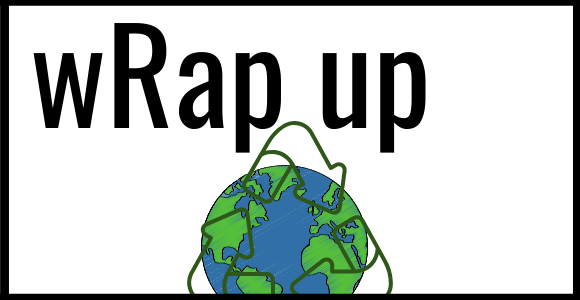
wRap up
With a little extra effort, you can easily work these five R’s into your daily routine. Recycle textiles, bring along reusable bags and dining accessories, become educated in what to recycle and how to recycle it, and use a little bit of creativity when items in your everyday no longer serve their purpose. When each of us plays our small role in reducing our output to landfills, we can make a large difference in impacting our world for a better tomorrow.
All quote recycling statistics were found here.

